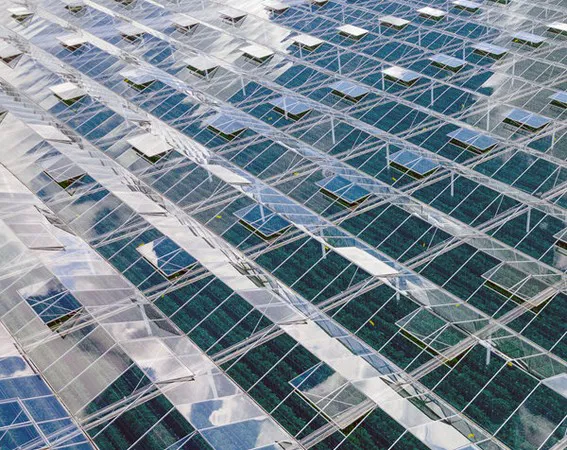Almost all growers are looking for solutions to the currently high energy prices. The intelligent use of coatings is an excellent option to help reduce energy costs.
The first thing that comes to mind when one thinks of coatings is protecting crops and optimally converting sunlight into production. But given the current conditions, it is also good to view coatings from a different perspective. There are energy-saving opportunities in the low-light winter months, as well as in spring.
Light is the limiting factor for production in a significant part of the year. During this time, it is important that as much sunlight as possible reaches the crop. In addition, it is good to keep in mind that half of the sunlight consists of PAR light, which benefits photosynthesis. The other half is heat radiation, which heats the crop and greenhouse. This natural increase in temperature reduces heating costs.

Optimal light transmission
A clean greenhouse roof is an essential condition for excellent light transmission. Regular cleaning, therefore, translates into energy savings. This can result in a light gain of as much as 5-10%, which improves crop growth and heats up the greenhouse more quickly.
However, there are still other ways of achieving improved light transmission. For example, the AntiReflect coating reduces reflection on the greenhouse glass. This increases transmission by 2.5-5%. Growers have indicated that this causes the greenhouse to warm up more quickly on the sunny side and therefore reduces energy costs.
AntiCondens spreads out condensation to form a water film instead of large coarse droplets. This also produces a 5-7% light gain.
Once the light transmission is in good shape, it is time to focus attention on the heat emitted by the heating pipes. PipePaint helps increase heat emissions by 10%. This clearly results in heating cost savings.
Using the sun's energy efficiently
As light increases in spring, it is important to use it efficiently. On some spring days, radiation is higher than what plants are able to cope with. The plants then require protection. The first line of defense here is the movable screen. However, a coating will become necessary at some point.

Many growers have developed a fixed method of coating over time. However, in actual practice, we are observing that fixed habits are disappearing. This trend was already underway as a result of climate change but has now been reinforced by the energy crisis.
Coating in layers
The key concept is intelligent coating. Giving careful thought to the crop's needs and what it is able to cope with. On spring days with much sun, the crop is not as vulnerable to light stress as it is to heat stress. During this time of the year, it usually makes no sense to reflect too much light.
A good option is to use ReduFuse to diffuse the light. Another possibility is ReduFuse IR, which also reduces heat radiation. Diffuse coatings ensure that light is better distributed across the crop. This way there are no areas that receive excessive light, which causes stress. For other crops, ReduHeat could likely be the best solution.
Optimally making use of light in spring this way results in energy savings. The invested energy results in optimal production. And reducing radiation just enough instead of applying heavy coatings ensures that the sun's free energy effectively does its work. This reduces heating requirements.
Additional measures are required as light levels increase in late spring and in the summer. For example, an extra layer of ReduSol over the previously applied layer. Or another layer of ReduFuse followed by a layer of ReduSol at a later stage. These are examples from actual practice. Growers are using their own creativity in their search for the best solutions. Our consultants support them in this respect and share their own experiences with the growers.
For more information: ReduSystems
ReduSystems
+31(0)13 507 53 99
[email protected]
www.redusystems.com
